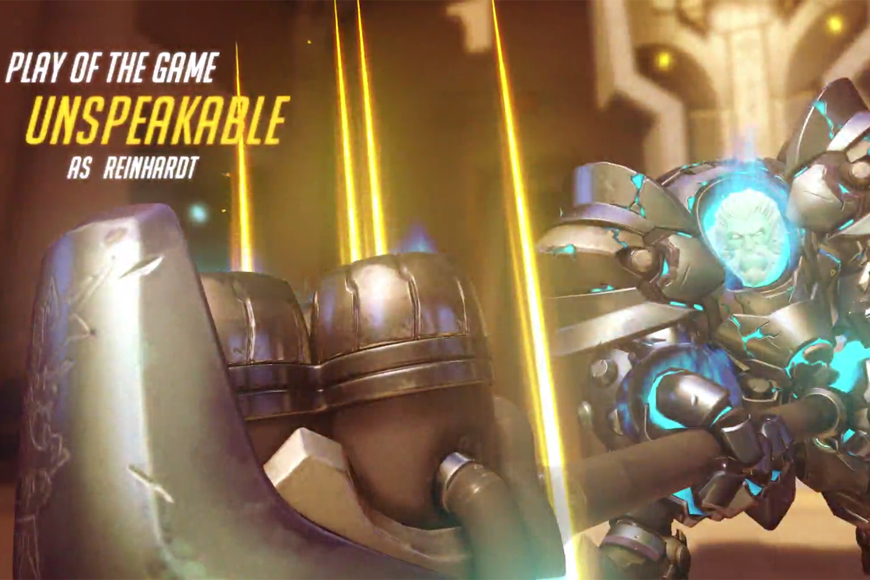With Twitch and YouTube offering popular gaming content creators big rewards for generating high numbers of views, it’s easy to accept this model as the norm.
But UK-based video-hosting site DingIt is now offering an alternative to content creators, with a license fee model that aims to reward quality over quantity, and provide a ‘more stable’ source of income to smaller creators than traditional revenue share.
We interview ADAM SIMMONS, VP of Content & Marketing at Dingit.tv and parent company Level Up Media, to find out more.
Typically, esports pros, brands and teams and pro content creators are those who make money from content. Are you now allowing fans to make money from content? Why and how are you doing this?
Unlike most video platforms, we work with a license fee for content rather than a revenue share. In our view, creating great content is a different skillset from marketing content and for this reason we have two separate partnerships. Our license fee is based on the quality of the content rather than the popularity of the creator.
For those with large followings, we have an audience partnership where they earn a rev share by video views they generate on any of our content through either embedding our player on their site or using a tracked URL to drive users (such as via social media profiles). By evaluating content and audience separately, smaller creators are still able to earn a fair license fee for their work.
In addition to our content license deals, we also run a weekly competition where users can submit content for approval by our team. Each week we pick a winner who receives $200 and our license team also contacts creators who submit high quality content. While the $200 prize is a great reward for some creators, we primarily use the competition as a way for creators to showcase some of their work and a potential license deal.
“Our license fee is based on the quality of the content rather than the popularity of the creator. Smaller creators are still able to earn a fair license fee for their work.”
Please explain what the new license fee model is, how it will work exactly and how can users benefit from this?
When we sign a license deal with a creator we pay per video they upload to our platform. Generally, we have a starting payment for any suitable content they currently have and then a monthly payment for new content. The rate of this license fee varies on a few factors but primarily the quality of the content and the audience appeal of the video are the two big factors, but the diversity and quantity of content also contributes to price.
These license deals are then periodically reviewed and adjusted to reflect any changes in the content.
For creators, the benefit of a license fee is the stability of the income. They know that as long as they produce suitable content, they will get paid. With a normal revenue share, the risk is all on the creator – if a video doesn’t do well or if the platform doesn’t monetize the content well, they don’t get paid.
With a license fee, the creators’ income is decided by factors within their control; the quality of the content they produce. As well as adding stability, a license fee smooths out any bumps on both sides; if a creator content is improving, their license will reflect it rather than revenue changing (sometimes dramatically) month-on-month due to factors outside of their control.

DingIt’s clips usually focus on bite-sized pieces of content like the above
Why are you making multiple gaming sites for esports fans, like TheGamer.tv and GoGamer.tv – tell us about that?
Gaming has a diverse and engaged community who not only enjoy different types of content, but often enjoy it for different reasons. When we look at our sites, we want to create a hub for different communities of gaming fans who each have different opinions and interests within the space.
While there is overlap between some of the different communities, there are also elements that make them unique. Even within esports titles, some viewers are heavily engaged in the CSGO scene whereas others prefer League of Legends.
When looking even more broadly at gaming, does a viewer going to watch a Minecraft creator guide watch for the same reason as someone tuning into a CSGO Major final? Are they even the same demographic? To look at traditional sports, tennis, F1, football, cricket and Olympic events all draw a different demographic and have specific sites catering to different interests.
DingIt.tv has and will continue to cater for esports enthusiasts, people who want to see the best gameplay or videos featuring more intense games.
Our next site, thegamer.tv, will be focusing on a more casual gaming community – those people who own a console and play the latest AAA releases and would watch highlights and funny moments around those games. But they may not be as concerned as to the optimal timing of a StarCraft build order or League of Legends CS/min by lane match-up.
“For creators, the benefit of a license fee is the stability of the income. With a normal revenue share, the risk is all on the creator – if a video doesn’t do well or if the platform doesn’t monetize the content well, they don’t get paid.”
Tell us about the exclusive and non-exclusive deals.
Normally, we work with non-exclusive deals. As we focus on bite-sized on-demand content, we want to complement the other outlets our creator partners use. We are confident in our ability to help creators grow on our platform and the stability our license fee model provides creators – and therefore our partnerships will naturally grow over time.
When a creator starts on our platform, we want them to see the benefits of the partnership – and we already see many of our partners focusing their VOD strategy to benefit from our model.
What kind of money can people make from their content? Please give us some examples.
We work with a wide range of partners, across multiple game titles and content genres which all effect a license fee. Having said that, we are confident our partners make more money by putting their content on our platform than other outlets.
One area we pride ourselves on is the stability provided by our license fee model compared to a revenue share.
Stability allows our creators to plan, invest and grow their careers which in turn provides long term benefits to our platform. In addition, by separating our content license and revenue share for driving audience, partners can be correctly compensated for the area’s they excel within.
 DingIt says it hopes to complement the likes of YouTube and Twitch
DingIt says it hopes to complement the likes of YouTube and Twitch
What benefits does DingIt have over, say, Twitch or YouTube?
A lot of our viewers and partners use other platforms. Each have their benefits and we see ourselves as complementing the offering of Twitch and YouTube. Our proprietary video player and advertising technology offer multiple benefits to our business and as a result, users/partners of the platform.
Outside of the tech, our content library is focused purely on curated and premium short-form content rather than user-generated content or live content. The big difference is that all our content is viewed by our staff before being made public on the platform to make sure it is entertaining, engaging and suitable.
For creators, this means we can offer a license fee since we are confident the content is high quality and can effectively monetize their content. For viewers, they can find some of the best content quickly and easily, without needing to search through millions of videos or settle for the highest-ranking videos.
“A lot of our viewers and partners use other platforms. Each have their benefits and we see ourselves as complementing the offering of Twitch and YouTube.”
How can brands tap into this new model? What are the benefits for them?
We monetize through pre-roll video advertising and have been successful in doing so thanks to our own advertising technology. By utilizing bite-sized content, we have been able to reach a much wider range of gaming fans in addition to the enthusiast market.
For brands, it provides a large-scale opportunity to reach gaming fans who are a difficult demographic to reach through other mediums. In addition to reach, our team approve all content on the platform before it goes public which means we can ensure all content is brand safe – something that has become increasingly important recently within online video.
Will you have a team vetting all content, in the wake of the recent YouTube issues (such as the PewDiePie incident)?
We have always focused on premium content rather than user generated content and therefore we already vet all our content and continue to do so.
More info:
http://www.dingit.tv/
http://levelupmedia.tv/

Dom is an award-winning writer and finalist of the Esports Journalist of the Year 2023 award. He graduated from Bournemouth University with a 2:1 degree in Multi-Media Journalism in 2007.
As a long-time gamer having first picked up the NES controller in the late ’80s, he has written for a range of publications including GamesTM, Nintendo Official Magazine, industry publication MCV and others. He worked as head of content for the British Esports Federation up until February 2021, when he stepped back to work full-time on Esports News UK and offer esports consultancy and freelance services. Note: Dom still produces the British Esports newsletter on a freelance basis, so our coverage of British Esports is always kept simple – usually just covering the occasional press release – because of this conflict of interest.



